Call Admission Control for Real-Time Applications of TVWS Wireless Access from HAP
by Habib M. Hussien 1,* ![]()
![]() , Sultan F. Meko 2, Konstantinos Katzis 3, Luzango P. Mfupe 4, Ephrem T. Bekele 1
, Sultan F. Meko 2, Konstantinos Katzis 3, Luzango P. Mfupe 4, Ephrem T. Bekele 1
1 Addis Ababa Institute of Technology (AAiT), School of Electrical and Computer Engineering, Addis Ababa, Ethiopia
2 Addis Ababa Science and Technology University (AASTU), Department of Electrical and Computer Engineering, Addis Ababa, Ethiopia
3 European University of Cyprus, Department of Computer Science and Engineering, School of Sciences, Nicosia, Cyprus
4 CSIR, NGEI, Pretoria, South Africa
* Author to whom correspondence should be addressed.
Journal of Engineering Research and Sciences, Volume 1, Issue 3, Page # 98-105, 2022; DOI: 10.55708/js0103010
Keywords: CAC scheme, Flow Priority, DCTS, High Altitude Platforms, QoS, VFEXP-MLWDF
Received: 03 February 2022, Revised: 07 March 2022, Accepted: 14 March 2022, Published Online: 17 March 2022
AMA Style
Hussien HM, Meko SF, Katzis K, Mfupe LP, Bekele ET. Call admission control for real-time applications of TVWS wireless access from Hap. Journal of Engineering Research and Sciences. 2022;1(3):98-105. doi:10.55708/js0103010
Chicago/Turabian Style
Hussien, Habib M., Sultan F. Meko, Konstantinos Katzis, Luzango P. Mfupe, and Ephrem T. Bekele. “Call Admission Control for Real-Time Applications of TVWS Wireless Access from Hap.” Journal of Engineering Research and Sciences 1, no. 3 (2022): 98–105. https://doi.org/10.55708/js0103010.
IEEE Style
H. M. Hussien, S. F. Meko, K. Katzis, L. P. Mfupe, and E. T. Bekele, “Call admission control for real-time applications of TVWS wireless access from Hap,” Journal of Engineering Research and Sciences, vol. 1, no. 3, pp. 98–105, 2022.
The rapid change in link capacity and user count induced by platform mobility in communication systems based on high altitude platform stations (HAPS) exploiting TV White Space (TVWS) spectrum may result in a high rate of handover failure and reduced resource utilization. In addition, in High Altitude Platform (HAP) wireless networks exploiting TV White Space (TVWS) spectrums, radio resources are frequently shared across numerous customers. When the number of users accepted into a network exceeds the network’s capacity, network congestion occurs, resulting in a decrease in Quality of Service (QoS) or user displeasure. To address these issues, Call admission control (CAC) may be used. This article proposed a novel call admission control scheme using deadline, channel, and tolerance aware scheduling (DCTS) algorithm to solve the challenge of scheduling real-time flows in wireless networks while maintaining tight latency guarantees. The DCTS system ensures that the average packet drop due to deadline violation converges to the preset packet loss tolerance for a given deadline requirement, packet loss tolerance, and arrival rate. Our approach covers how to handle multiple real-time packet flows at the same time with a high risk of packet losses due to latency violations without surpassing a set threshold. It also discusses how real-time application scheduling in a wireless context must account for the complicated relationship between packet deadlines, channel circumstances, and flow tolerance, as well as how to propose such scheduling policies. We also test our proposed algorithm’s performance for various arrival, channel state, deadline, and threshold scenarios. The convergence of packet drops near the threshold was demonstrated analytically. In wireless networks, CAC is a critical component in ensuring guaranteed quality of service. For real-time wireless applications that employ the DCTS scheduler, we present a threshold-based CAC method. We use the assumption that all flows belong to the same traffic class for determining the admission criteria. Our goal is to create a CAC algorithm that ensures that packet loss due to deadline violations is kept to a minimum for all allowed users. As a result, our CAC is based on a set of criteria that includes the maximum packet deadline, loss tolerance, and pace of newly received calls, as well as the accepted flows’ minimum flow priority. The admission controller threshold is compared to the properties of freshly arrived flow in our CAC method. We compare our scheme’s performance to that of the CAC of Violation Fair Exponential Rule (VFEXP) algorithm and the Modified Largest Weighted Delay First (MLWDF) methods.
1. Introduction
Broadband wireless technology has progressed to keep up with the ever-increasing need for high-bandwidth data and applications. Due to the exponential growth in the number of users, there is a tremendous need for high-quality wireless communication services. As a result of this demand, more novel communication infrastructures are being developed. To provide communication services to users, terrestrial and satellite networks have been built. The only creative option to deliver cellular communications services using High Altitude Platform (HAP) is to overcome the drawbacks of both terrestrial and satellite systems [1]. HAP might be an aircraft or an airship, and it could be a lighter or heavier-than-air balloon. HAP functions in the stratospheric layer at a height of 17–22km [2-7] by keeping platform mechanisms, manned/unmanned aircraft, or airships flying in a close circle. Low propagation delay, big coverage area, line of sight, low cost, broadband capacity, broadband and broadcast services, and quick deployment are the most essential advantages of HAP [4]. Because of its efficient capacity, HAPs may give service to the shadow region and edge of the cell placed user, making them complementary to terrestrial systems [5-7]. Several concerns, including as resource allocation, scheduling, and packet flow management, in HAP wireless system using TVWS spectrum must be explored in this respect [8 – 13]. Wireless networks, like wired networks, have a range of QoS requirements. Delay, throughput, fairness, and packet loss threshold are all frequent QoS metrics. Because radio spectrum is a limited resource, customers are only allowed to utilize the service when the requisite resource is available. A freshly arrived user will be barred if this does not happen. As a result, call admission policy determines whether or not users are admitted. The goal of Call Admission Control (CAC) is to reduce the likelihood of users’ calls being blocked while also maximizing the utilization of available resources. CAC aids in the regulation of network traffic in real-time applications, reducing congestion in wireless network traffic. CAC is also used in HAP wireless networks exploiting spectrum, to provide a particular degree of QoS. Consider a real-time service with a deadline, where the number of admitted users influences the proportion of packets dropped owing to a deadline violation. When an excessive number of users are permitted to a single HAP link wireless network, the percentage of packets that are dropped skyrockets. This, in turn, leads to client unhappiness, which lowers the service provider’s income. The factors that may be controlled in most CAC algorithms include bandwidth, total number of simultaneous calls, total number of packets transferred per unit time, and total number of packets discarded owing to network traffic congestion. A new call may be prohibited from accessing the network until at least one of the allowed users ends if a predetermined limit of one of these parameters is exceeded. Alternatively, a parameter for CAC can be used to create a moderate decrease of QoS. Packet losses due to a deadline violation, for example, may be inevitable; yet, real-time applications can tolerate some loss tactfully. As a result, the threshold-based CAC algorithm may ensure that packet loss due to deadline violations is kept to a minimum for each real-time flow. CAC’s capabilities go beyond just accepting or rejecting incoming calls depending on available resources. The allowed mobiles can also travel from one cell to another; if the needed QoS is met, a handoff call can be accepted by an adjacent cell; otherwise, the user is discarded owing to handoff failure. As a result, the percentage of packets missed owing to handoff is an essential QoS statistic. A reservation-based CAC has been proposed in [14] to decrease handoff call dropping. Some specific channels are set aside for handoff calls under this arrangement. As a result, a handoff call is permitted if a reserved channel or free channel is available for new calls. As a result, when the number of open channels exceeds the number of reserved channels, a new call is accepted. CAC has been widely investigated in wired networks with the goal of congestion control and QoS provisioning. Because of time and location dependent channel circumstances, handoff requirements owing to mobility, and restricted bandwidth or slots, these algorithms cannot be employed directly for wireless counterpart. In addition, additional QoS requirements are available for wireless multimedia applications such as audio, video, and data. As a result, users must be supported by the CAC for wireless apps depending on QoS requirements. Literatures [15-18] presents a survey analysis of relevant wireless CAC. The scheduler is a crucial component of the CAC scheme’s architecture. In this research, we suggested a scheduling method that takes three crucial factors into account when determining scheduling circumstances: channel conditions, flow tolerances, and packet deadlines in queues. The authors of [19] presented a modification to the Largest Weighted Delay First (MLWDF) scheduling discipline that accounts for wireless channels’ time changing properties. The authors of [20] presented a comparison of different CAC scheme including Violation Fair Exponential Rule (VFEXP). As can be shown in the simulation, our suggested algorithm performs considerably better than the VFEXP and MLWDF schemes in terms of both percentage of satisfied consumers and percentage of call blocking. The rest of this paper is laid out as follows. We outline our system model and explore our threshold-based CAC policy in Section II. The Deadline, Channel, and Tolerance aware scheduling (DCTS) method is used to build an admission criterion. In Section III, we look into CAC and go over the suggested method in detail. In section IV, we use Matlab simulations to test the performance of our method and analyze the findings. We analyze the proportion of satisfied users and the percentage of call blocking using various system thresholds. We also compare our algorithm’s performance to that of other methods like MLWDF and VFEXP. Finally, Section V brings the paper conclusion.
2. System Model and Description
In this scenario, a HAP with a TVWS base station antenna payload at a 20-kilometer height assigned to the TVWS base station on the ground is considered, with the TVWS base station covering a coverage radius of 33km-100km. We examine a single-link HAP wireless system using TVWS spectrums operating in slotted time t where 𝑡 = {0,1,2,…,}. Consider a downlink situation in which users come and depart at different times. Each incoming call is assigned to a service if it meets the CAC controller’s admission criteria. The channel holding time is exponentially distributed with a mean of 1/ℎ, while the call arrival follows a Poisson process with rate, ![]() . Call durations are independent and distributed exponentially with a mean of
. Call durations are independent and distributed exponentially with a mean of ![]() . Once the call is accepted into the system, it will be handled in the DCTS scheduling scheme’s priority sequence. During each time slot, the scheduler permits just one flow for packet transmission. If no slot is available at that moment, the call will be placed in a queue and will have to wait until a slot becomes available. After a small number of flows have been allowed to the service, every new call is approved based on system admission criteria, as illustrated in Fig.1. If a new call meets the admission criteria, it will be accepted into the system. The admitted flows are serviced in accordance with DCTS policy. Because accepted packets must wait for a period of time before being scheduled, the system prioritizes calls with a longer deadline and higher packet loss tolerance, i.e., call admission criteria is proportional to flow tolerance and deadline. This scheme’s QoS performance is measured by the proportion of satisfied users and call blocking. Following that, we’ll go into CAC analysis, which includes admission criteria, percentages of admitted users, and percentages of call blocking.
. Once the call is accepted into the system, it will be handled in the DCTS scheduling scheme’s priority sequence. During each time slot, the scheduler permits just one flow for packet transmission. If no slot is available at that moment, the call will be placed in a queue and will have to wait until a slot becomes available. After a small number of flows have been allowed to the service, every new call is approved based on system admission criteria, as illustrated in Fig.1. If a new call meets the admission criteria, it will be accepted into the system. The admitted flows are serviced in accordance with DCTS policy. Because accepted packets must wait for a period of time before being scheduled, the system prioritizes calls with a longer deadline and higher packet loss tolerance, i.e., call admission criteria is proportional to flow tolerance and deadline. This scheme’s QoS performance is measured by the proportion of satisfied users and call blocking. Following that, we’ll go into CAC analysis, which includes admission criteria, percentages of admitted users, and percentages of call blocking.
2.1. Deadline,Channel and Tolerance aware Scheduling (DCTS)
When making scheduling decisions, this method considers three factors: channel conditions, flow tolerance, and packet deadlines in queues. At first, this policy provides weight to each packet in a queue based on arrival time and packet delay, as well as the value of flow priority. The weights are assigned in decreasing order. The heavier weights going to packets that have a longer wait period. Furthermore, the total weight of each queue is computed by adding the weights of packets in the same queue that the link channel can support during slot, i.e., only the weights of packets that the channel can contribute to the total weight of the respective queue among the number of packets in the queue. We utilize the decreasing function to implement DCTS, which is defined as
![]()
where, ![]() denotes the weight allocated to the kth packet of the
denotes the weight allocated to the kth packet of the ![]() queue. The parameters,
queue. The parameters, ![]() reflect the current priority of flow i and
reflect the current priority of flow i and ![]() represent the time left until a packet,
represent the time left until a packet, ![]() at slot expires. We suppose that f decreases monotonously with
at slot expires. We suppose that f decreases monotonously with ![]() e.g.
e.g. ![]() Equation (1) shows that the packet with the shortest time to expiration receives the most weight, while the package with the shortest time to expiry receives the least weight. This increases the likelihood of scheduling packets with a shorter expiration date. Each packet’s weight is determined solely on the basis of its deadline. Following that, DCTS computes weight for each flow, taking into account channel effects as follows:
Equation (1) shows that the packet with the shortest time to expiration receives the most weight, while the package with the shortest time to expiry receives the least weight. This increases the likelihood of scheduling packets with a shorter expiration date. Each packet’s weight is determined solely on the basis of its deadline. Following that, DCTS computes weight for each flow, taking into account channel effects as follows:

where, ![]() signifies the highest sequence number of the packet that was either transmitted or discarded until the start of , i.e.,
signifies the highest sequence number of the packet that was either transmitted or discarded until the start of , i.e., ![]() indicates the index of the head-of-line (HoL) packet of the
indicates the index of the head-of-line (HoL) packet of the ![]() flow in slot t . Here, we assumed that if
flow in slot t . Here, we assumed that if ![]() otherwise, at the upper limit of the summation in (2), must be substituted by the minimum of and the number of packets existing in flow queue. In the following stage, scheduling choices are determined using the weights 𝑤(𝑡) =
otherwise, at the upper limit of the summation in (2), must be substituted by the minimum of and the number of packets existing in flow queue. In the following stage, scheduling choices are determined using the weights 𝑤(𝑡) = ![]() .The chance of selecting a flow is a function of in DCTS, which is a randomized scheduling scheme 𝑤(𝑡) . DCTS, in particular, makes the following scheduling decisions:
.The chance of selecting a flow is a function of in DCTS, which is a randomized scheduling scheme 𝑤(𝑡) . DCTS, in particular, makes the following scheduling decisions:
 𝐿 is a constant in this equation. In general, 𝐿 is selected to be big such that scheduling a flow with the highest weight has a high likelihood. It’s worth noting that even if flow 𝑖 has no waiting packets,
𝐿 is a constant in this equation. In general, 𝐿 is selected to be big such that scheduling a flow with the highest weight has a high likelihood. It’s worth noting that even if flow 𝑖 has no waiting packets, ![]() = 0, it has a positive chance of being scheduled. If this occurs, the system will just remain inactive. Now we will go over how DCTS updates flow priority,
= 0, it has a positive chance of being scheduled. If this occurs, the system will just remain inactive. Now we will go over how DCTS updates flow priority, ![]() for 𝑖𝑖 = 1,…,𝑁𝑁. The priority updates are based on the same principle as the gradient decent method. Assume that
for 𝑖𝑖 = 1,…,𝑁𝑁. The priority updates are based on the same principle as the gradient decent method. Assume that ![]() represents the steady-state packet loss for priority assignments, with
represents the steady-state packet loss for priority assignments, with ![]()
![]() then the priority for flow 𝑖 should go up (and
then the priority for flow 𝑖 should go up (and ![]() should go down). If
should go down). If ![]() on the other hand, the priority for flow 𝑖 should be reduced (
on the other hand, the priority for flow 𝑖 should be reduced (![]() should be increased), providing other flows a greater opportunity to attain the target throughput. This leads to the gradient decent technique below.
should be increased), providing other flows a greater opportunity to attain the target throughput. This leads to the gradient decent technique below.
![]()
![]()
Unfortunately, the preceding procedure cannot be implemented without knowing ![]() . In many circumstances, obtaining necessitates obtaining
. In many circumstances, obtaining necessitates obtaining ![]() the steady state distribution of the underlying Markov chain, which is computationally expensive. We propose a two-time scale based stochastic approximation technique [21] to solve the aforementioned problem. In this method, the steady state packet loss is calculated as a temporal average of the observed packet drop on a quicker timeline, while the priorities are updated on a slower period. Because of the time scale split, the priorities appear to be quasi static for the quicker time scale operation. We specifically update the following priorities: Let
the steady state distribution of the underlying Markov chain, which is computationally expensive. We propose a two-time scale based stochastic approximation technique [21] to solve the aforementioned problem. In this method, the steady state packet loss is calculated as a temporal average of the observed packet drop on a quicker timeline, while the priorities are updated on a slower period. Because of the time scale split, the priorities appear to be quasi static for the quicker time scale operation. We specifically update the following priorities: Let ![]() signify the number of packets discarded owing to a deadline violation among flow 𝑖′s first t arrivals under Δ.
signify the number of packets discarded owing to a deadline violation among flow 𝑖′s first t arrivals under Δ.

To obtain the time scale separation, we use α(t) and β(t) in (8) as follows:

where, ![]() Also note that (6) computes the temporal average of the packet loss for 𝛼(𝑡). We consider all flows to have identical QoS restrictions, i.e., the same traffic class, when determining the admission criterion. Our goal is to create a CAC algorithm that ensures that packet loss due to deadline violations is kept to a minimum for all allowed users. As a result, our CAC is based on a set of criteria that includes the maximum packet deadline, loss tolerance, and pace of newly received calls, as well as the accepted flows’ minimum flow priority. Our scheme is a single-threshold based CAC, but it may be expanded to a multiple-threshold based CAC that can handle a variety of traffic types. We compare our scheme’s performance to that of the CAC of VFEXP and the MLWDF methods.
Also note that (6) computes the temporal average of the packet loss for 𝛼(𝑡). We consider all flows to have identical QoS restrictions, i.e., the same traffic class, when determining the admission criterion. Our goal is to create a CAC algorithm that ensures that packet loss due to deadline violations is kept to a minimum for all allowed users. As a result, our CAC is based on a set of criteria that includes the maximum packet deadline, loss tolerance, and pace of newly received calls, as well as the accepted flows’ minimum flow priority. Our scheme is a single-threshold based CAC, but it may be expanded to a multiple-threshold based CAC that can handle a variety of traffic types. We compare our scheme’s performance to that of the CAC of VFEXP and the MLWDF methods.
3. Admission Control Analysis for Real-Time Applications
We show how our CAC scheme dynamically accepts additional calls. When a new call comes in, a CAC procedure is started to see if the new MS should be accepted. Our threshold-based CAC employs the following parameters for newly arriving flow ![]() new call arrival rate
new call arrival rate ![]() new call packet deadline
new call packet deadline ![]() new call flow tolerance
new call flow tolerance ![]() and flow priority of already admitted MSs. As a result, when a new MS applies for admission to a system, the CAC scheme looks at the four requirements listed above. Let
and flow priority of already admitted MSs. As a result, when a new MS applies for admission to a system, the CAC scheme looks at the four requirements listed above. Let ![]() be the admission criterion for flow
be the admission criterion for flow ![]() with j being the number of newly admitted users at time slot t.
with j being the number of newly admitted users at time slot t. ![]() is calculated as follows:
is calculated as follows:

The minimum of the flow priority of already accepted MSs is determined as ![]()

Furthermore, the service provider establishes the CAC threshold ![]() As a result, the new MS’s admission requirements are as follows: if
As a result, the new MS’s admission requirements are as follows: if ![]() the new MS is accepted to the system; otherwise, the new MS is blocked. The two QoS measurement metrics in this system are user happiness (% of satisfied users) and percentage of call blocking. If the proportion of satisfied users rises, it means that the scheduler is effectively serving admitted consumers for a particular threshold. However, there is a symbiotic relationship between the number of satisfied users and the percentage of blocked calls. Increased call blocking suggests that fewer users are accepted to the system, resulting in reduced network congestion. As a result, the threshold
the new MS is accepted to the system; otherwise, the new MS is blocked. The two QoS measurement metrics in this system are user happiness (% of satisfied users) and percentage of call blocking. If the proportion of satisfied users rises, it means that the scheduler is effectively serving admitted consumers for a particular threshold. However, there is a symbiotic relationship between the number of satisfied users and the percentage of blocked calls. Increased call blocking suggests that fewer users are accepted to the system, resulting in reduced network congestion. As a result, the threshold ![]() is determined by weighing the trade-off between the two parameters. This policy combines the CAC with the scheduling of accepted flows, as seen in Fig. 1. For better demonstration, we’ve included some simple scheduling tasks here. The CAC requires the minimal flow priorities of admitted users for each timeslot, hence the system follows the procedures below.
is determined by weighing the trade-off between the two parameters. This policy combines the CAC with the scheduling of accepted flows, as seen in Fig. 1. For better demonstration, we’ve included some simple scheduling tasks here. The CAC requires the minimal flow priorities of admitted users for each timeslot, hence the system follows the procedures below.
Step 1: DCTS gives a weight to each packet of accepted flows for a fixed t . Packet ![]() is given a weight of
is given a weight of
![]()
where ![]() denotes the current priority of allowed flow i and
denotes the current priority of allowed flow i and ![]() denotes the time until a packet
denotes the time until a packet ![]() in slot t expires.
in slot t expires.
Step 2: For each accepted flow, the CAC system computes weight ![]() as follows:
as follows:
![]()
where ![]() is the maximum sequence number of the packet that was either transmitted or discarded until the start of , i.e.,
is the maximum sequence number of the packet that was either transmitted or discarded until the start of , i.e., ![]() is the index of the
is the index of the ![]() flow’s head-of-line (HoL) packet in slot t.
flow’s head-of-line (HoL) packet in slot t.
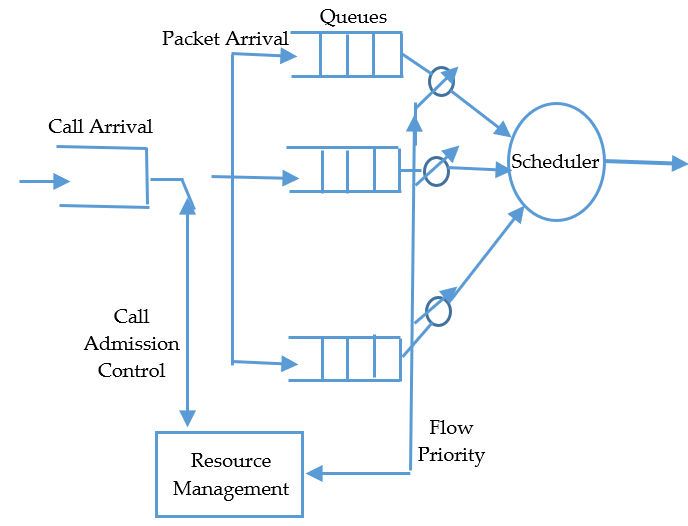
applications
Step 3: Because DCTS is a randomized scheduling scheme, it selects flow 𝑖 based on the probability 𝛤𝑖 as:

where 𝐿 is a constant factor used to average the ratio of the maximum weight of flow 𝑖 to the total weight of all flows using exponential averaging.
Step 4: CAC computes the ![]() minimum of flow priority among all admitted flows, as specified in (2).
minimum of flow priority among all admitted flows, as specified in (2).
Step 5: CAC determines the decision criteria for the newly received flow j , as specified in (1).
Step 6: The CAC threshold ![]() is compared to the decision criterion
is compared to the decision criterion ![]() . Flow 𝑗𝑗 is accepted to the queue if
. Flow 𝑗𝑗 is accepted to the queue if ![]() >
> ![]() ; else, it is denied.
; else, it is denied.
Step 7: DCTS updates the li(t time average percentage of packet losses as follows:

Step 8: At the conclusion of each frame, DCTS updates each user’s flow priority as follows: where β1 and β2 are step-size in scheduling. The time average packet ![]() for an nth frame is calculated as
for an nth frame is calculated as
![]()
The procedures outlined above can be used to calculate the proportion of satisfied users and the percentage of blocked calls. The fraction of admitted users among the number of arrived flows is used to calculate the percentage of user satisfaction. It is calculated for a certain time period or interval. We presume that after the call is accepted, the DSCT scheduler will handle each call according to their specific QoS requirements.
4. Simulation Results and Discussion
We compare our threshold-based CAC to CAC schemes based on MLWDF and VFEXP scheduling schemes to show how well it performs in terms of call blocking and percentage of satisfied users. Table 1 lists the parameters that were utilized in the simulation.
Table 1: List of parameters used in the simulation
Parameters | Values |
Channel bandwidth | 8MHz |
Initial Number of flows | 4 |
Maximum packet deadline of each flow | 5,5,6,6 time slots |
Arrival rate | 10 packet per slot |
Frame window size | 10 |
L | 2 |
Varies from 0.01 to 0.1 | |
0.2 | |
Channel holding time | 0.1 |
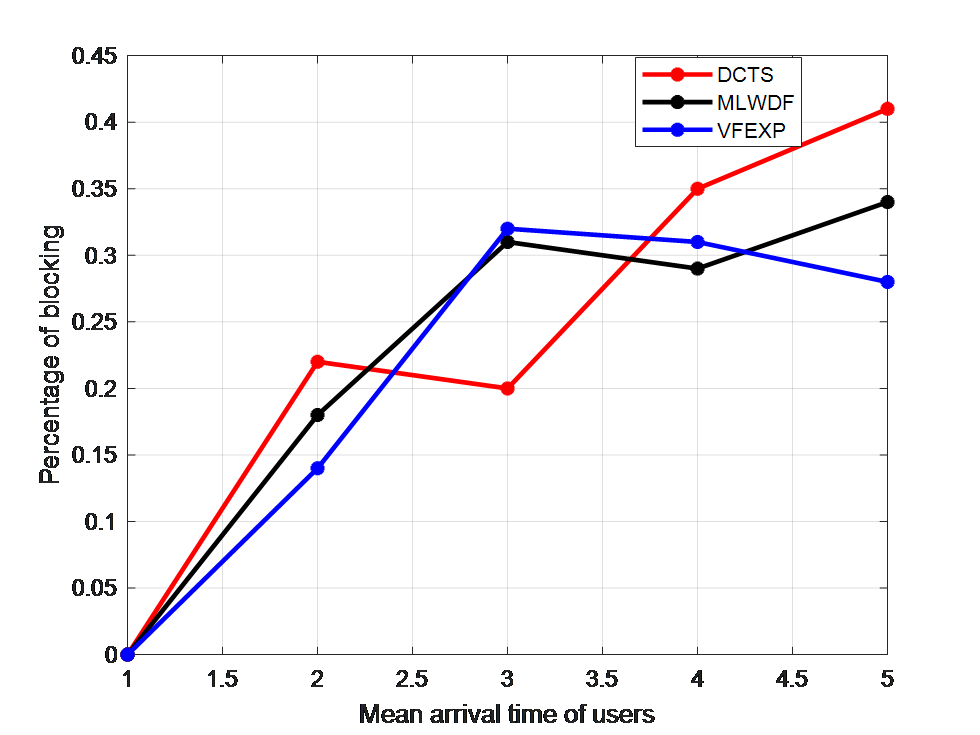
Figure 2: Percentage of Blocking for ![]()
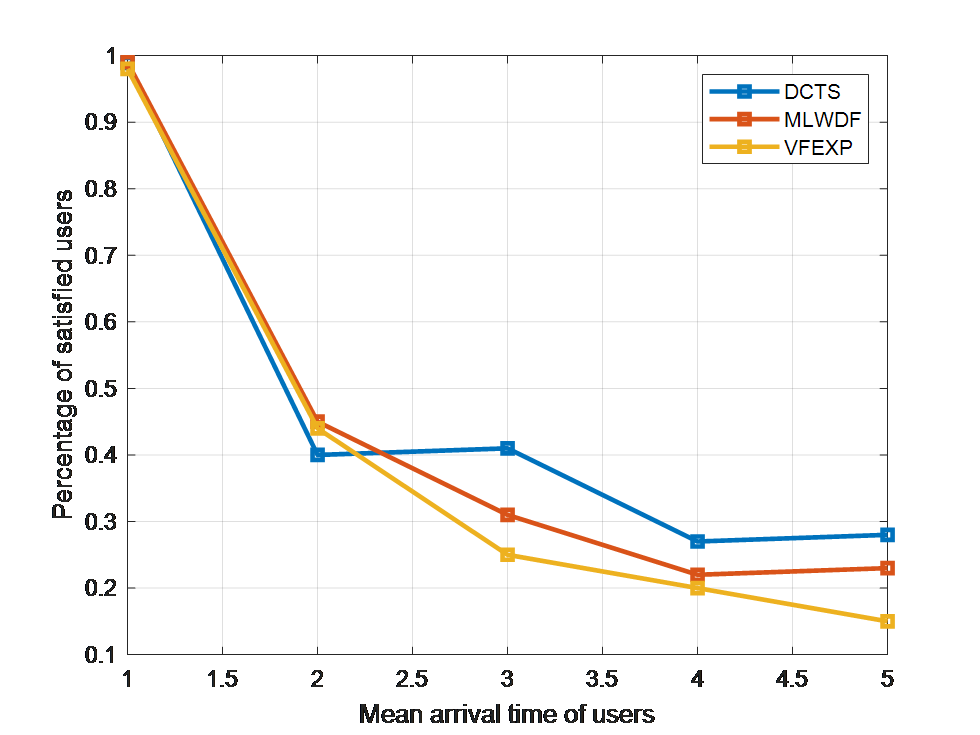
Figure 3: Percentage of satisfied users for ![]()
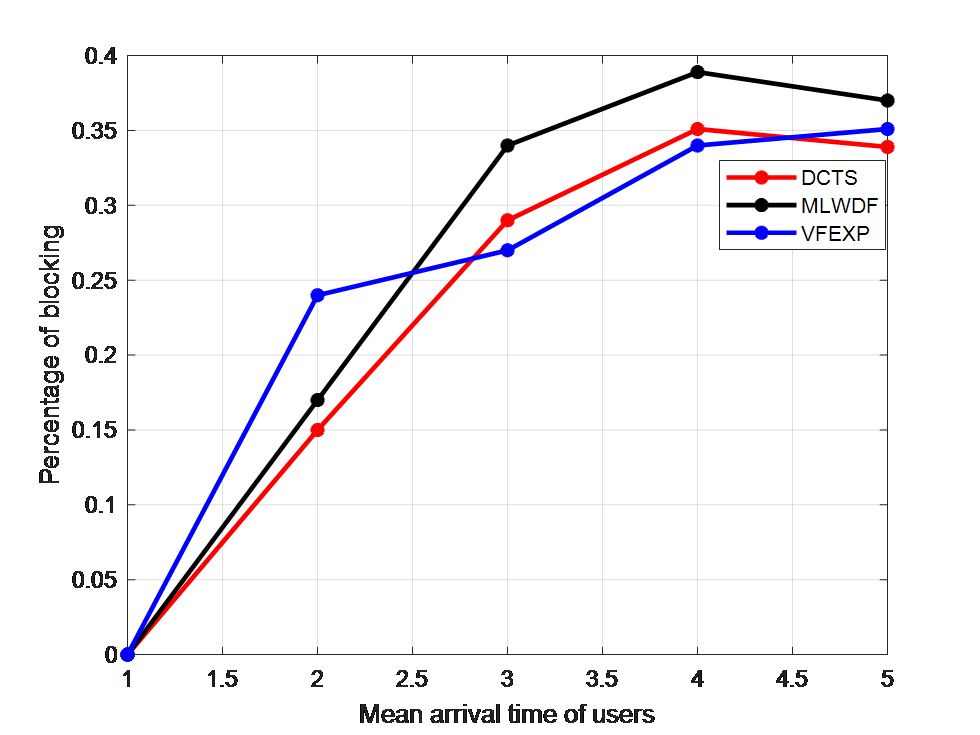
Figure 4: Percentage of Blocking for ![]()
The proportion of call blocking for threshold-based CAC under DCTS, MlWDF, and VFEXP schedulers is shown in Fig.2. The flow tolerance and system threshold are 0.001 and 0.2, respectively. The percentage of calls that are blocked is calculated for various mean arrival times. As demonstrated in the graph, our scheme’s percentage of call blocking during the bulk of arrival time is lower than CAC under the MLWDF and VFEXP schedulers.
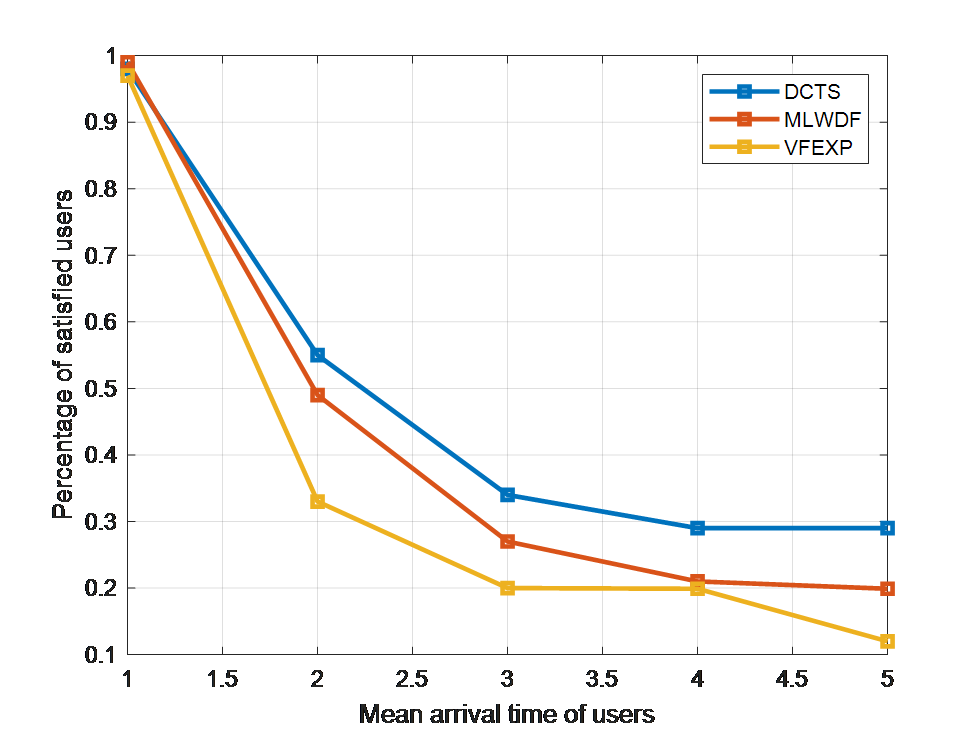
Figure 5: Percentage of satisfied users for ![]()
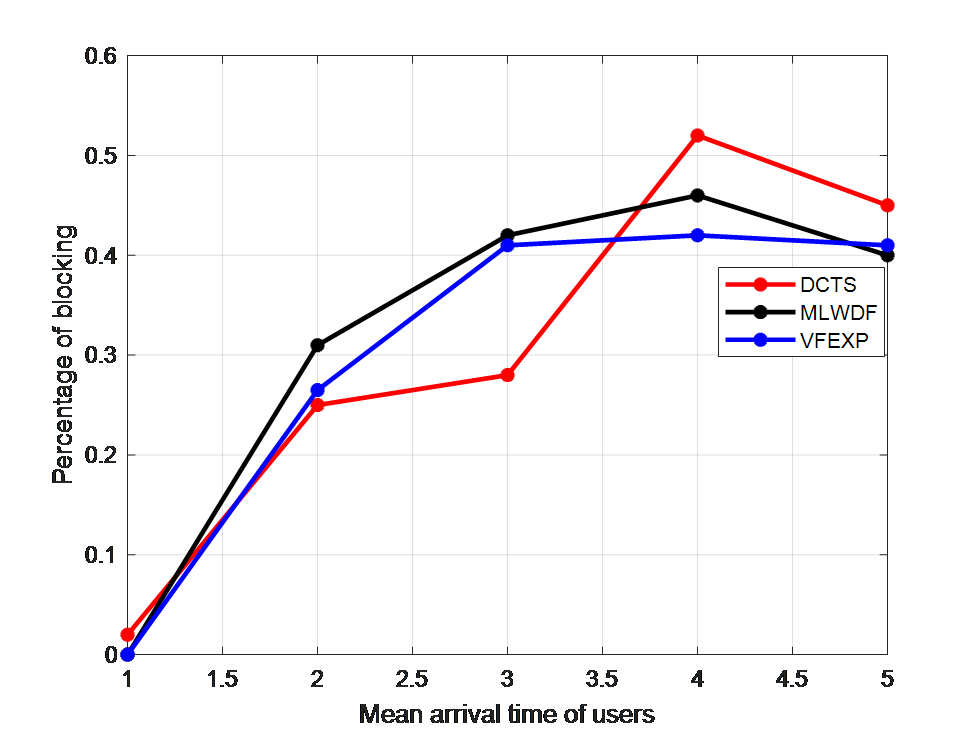
Figure 6: Percentage of Blocking for ![]()
Figure 3 depicts the appropriate proportion of satisfied users. It also demonstrates that our scheme outperforms the other two in terms of mean arrival times of 1, 3, 4, and 5. The number of coming calls grows as the mean arrival time increases. As a result, the number of admitted users drops while the percentage of blocked calls rises. Figures 2 through 9 illustrate this point. The graph shows how changing the system threshold value impacts the call blocking percentage. A lower barrier allows for the admission of a greater number of flows. As a consequence, performance in terms of call blocking percentages and satisfied users improves. However, as
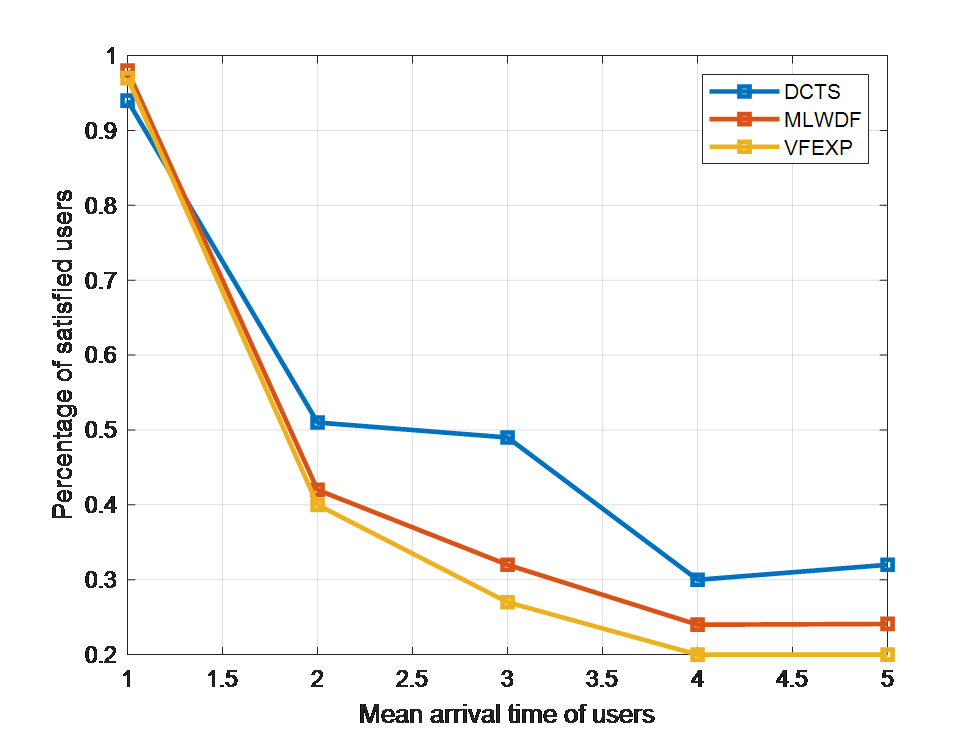
Figure 7: Percentage of satisfied users for ![]()
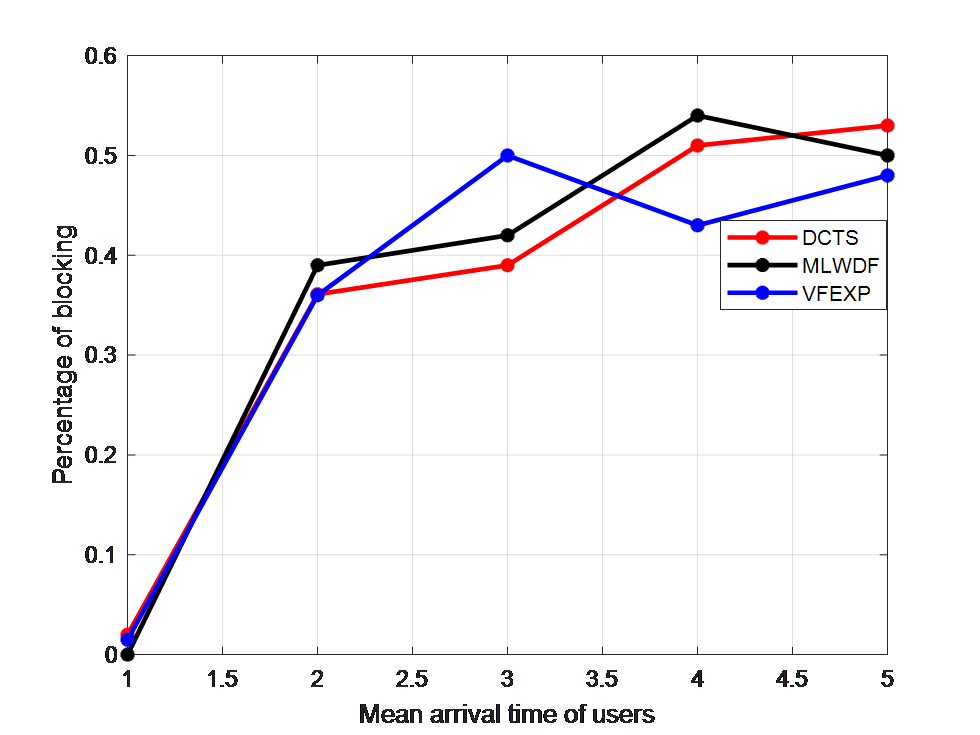
Figure 8: Percentage of Blocking for ![]()
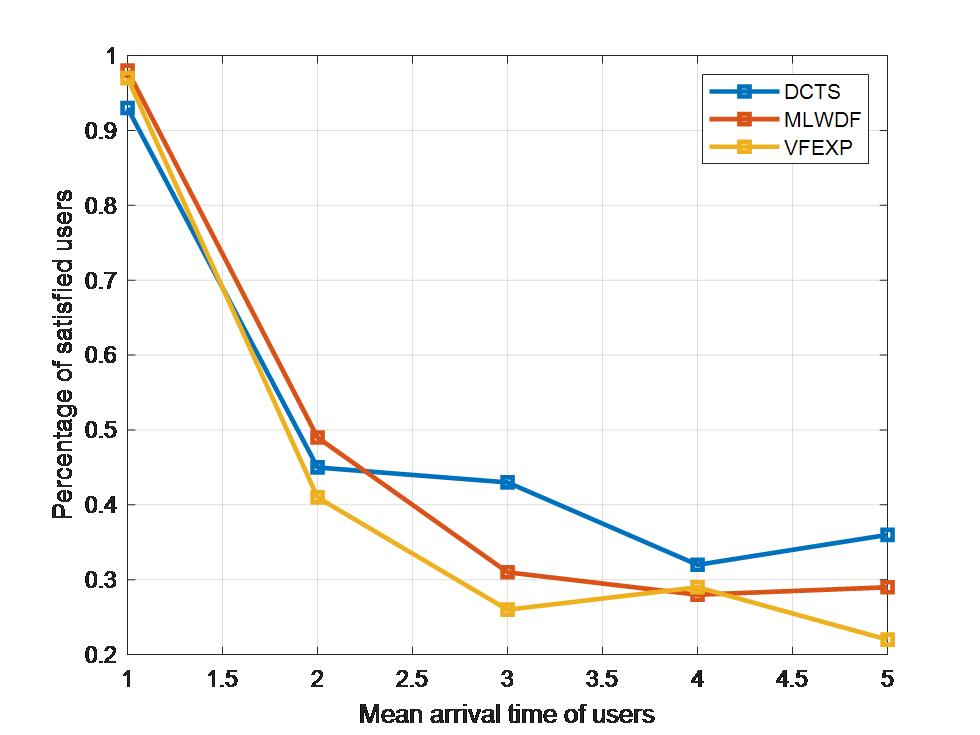
Figure 9: Percentage of satisfied users for ![]()
the number of allowed users grows, the scheduler becomes overburdened, causing more packets to be dropped due to deadline breaches. Figures 3, 5, 7, and 9 have ![]() values of 0.001, 0.01, 0.05, and 0.08, respectively. The equivalent percentages of satisfied consumers for our strategy with a mean arrival time of 1 are 0.97, 0.96, 0.92, and 0.91, respectively. Even though the proportion of satisfied consumers has decreased, it may not be constant across various graphs (for mean arrival time of 2, 3, 4 and 5). When comparing the performance of the other two CAC schemes, the MLWDF-based CAC scheme outperforms the VFEXP-based CAC method.
values of 0.001, 0.01, 0.05, and 0.08, respectively. The equivalent percentages of satisfied consumers for our strategy with a mean arrival time of 1 are 0.97, 0.96, 0.92, and 0.91, respectively. Even though the proportion of satisfied consumers has decreased, it may not be constant across various graphs (for mean arrival time of 2, 3, 4 and 5). When comparing the performance of the other two CAC schemes, the MLWDF-based CAC scheme outperforms the VFEXP-based CAC method.
5. Conclusion
We looked at the challenge of building a CAC scheme that supports our suggested DCTS scheduling scheme, which helps to reduce network congestion, in this research. We propose a novel call admission criterion based on system thresholds, with the goal of reducing packet losses in allowed flows. In terms of both percentage of call blocking and percentage of pleased consumers, our suggested CAC algorithm outperforms the CAC of the M-LWDF and VF-EXP schemes, according to our simulation findings.
- Z. Yang, A. Mohammed, T. Hult, & D. Grace, “Downlink coexistence performance assessment and techniques for WiMAX services from high altitude platform and terrestrial deployments,” EURASIP Journal on Wireless Communications and Networking, 2008, DOI:10.1155/2008/291450.
- H. M. Hussien, K. Katzis and L. P. Mfupe, “Dynamic Spectrum Allocation for TVWS Wireless Access from High Altitude Platform,” 2021 International Conference on Electrical, Computer and Energy Technologies (ICECET), 2021, pp. 1-6, DOI: 10.1109/ICECET52533.2021.9698667.
- H. M. Hussien, K. Katzis and L. P. Mfupe, “Intelligent Power Allocation for Cognitive HAP Wireless Networks Using TVWS Spectrum,” 2021 International Conference on Electrical, Computer and Energy Technologies (ICECET), 2021, pp. 1-6, DOI: 10.1109/ICECET52533.2021.9698778.
- H. M. Hussien, K. Katzis, L. P. Mfupe and E. T., “A Novel Resource Allocation for HAP Wireless Networks Exploiting TVWS Spectrum,” 2021 IEEE AFRICON, 2021, pp. 1-6, DOI: 10.1109/AFRICON51333.2021.9570928.
- S.H. Alsamhi, N.S. Rajput,” Implementation of call
admission control technique in HAP for enhanced QoS in wireless network deployment,” Telecommun Syst 63, 141–151 (2016), doi:10.1007/s11235-015-0108-4 - K. Katzis, L. Mfupe and H. M. Hussien, “Opportunities and Challenges of Bridging the Digital Divide using 5G enabled High Altitude Platforms and TVWS spectrum,” 2020 IEEE Eighth International Conference on Communications and Networking (ComNet), 2020, pp.1-7, DOI: 10.1109/ComNet47917.2020.9306090
- H. M. Hussien et al.,” Bridging the Urban-Rural Broadband Connectivity Gap Using 5G Enabled HAPs Communication Exploiting TVWS spectrum,” J. Engg. Res. & Sci, 2022 (in press).
- J. G. Andrews, A. Ghosh, R. Muhamed, “Fundamentals of WiMAX: Understanding Broadband Wireless Networking”, Prentice Hall, 2007.
- S. Ahson Mohammad Ilyas, ”WiMAX Technologies,
Performance Analysis, and QoS,” CRC Press, 2008. - R. Krishna Rao and G.Radhamani, ”WiMAX A Wireless
Technology Revolution,” Auerbach Publications, 2008. - M. D. Katz and F. H.P. Fitzek, “WiMAX Evolution Emerging Technologies and Applications” John Wiley and Sons, 2009.
- Z. Abate, ”WiMAX RF Systems Engineering,” Artech house, 2009.
- H. Wang, L. P. Kondi, A. Luthra, and S. Ci,”4G Wireless Video Communications,” John Wiley and Sons, 2009.
- J. Ni, D. H. K. Tsang, S. Tatikonda and B. Bensaou, “Threshold and reservation based call admission control policies for multiservice resource-sharing systems,” Proceedings IEEE 24th Annual Joint Conference of the IEEE Computer and Communications Societies., 2005, pp. 773-783 vol. 2, DOI: 10.1109/INFCOM.2005.1498309.
- Z. Quan and J.M. Chung,” Admission control for probabilistic services with earliest deadline first scheduling In Local and Metropolitan Area Networks,” The 13th IEEE Workshop on, pages 211 – 215, April 2004, DOI: 10.1109/LANMAN.2004.1338433
- M. H. Ahmed, “Call admission control in wireless networks: A comprehensive survey,” in IEEE Communications Surveys & Tutorials, vol. 7, no. 1, pp. 49-68, First Qtr. 2005, DOI: 10.1109/COMST.2005.
- S.S. Tzeng, “Call admission control policies in cellular wireless networks with spectrum renting,” Computer Communications, 32(18), December 2009, DOI: 10.1016/j.comcom.2009.07.017
- S. Ahson Mohammad Ilyas, “WiMAX Technologies, Performance Analysis, and QoS,” CRC Press, 2008.
- M. Andrews et al. “CDMA data QoS scheduling on the forward link with variable channel conditions”, Bell Laboratories Technical Report, April, 2000
- M.F. KHALED et al. “Channel-Aware Earliest Deadline Due Fair Scheduling for Wireless Multimedia Networks,” Wireless Personal Communications (2006) 38: DOI: 233–252, 10.1007/s11277-006-9013-1
- S.B. Vivek S.,” Stochastic Approximation: a dynamic systems viewpoint,” Cambridge University Press, 2008.

